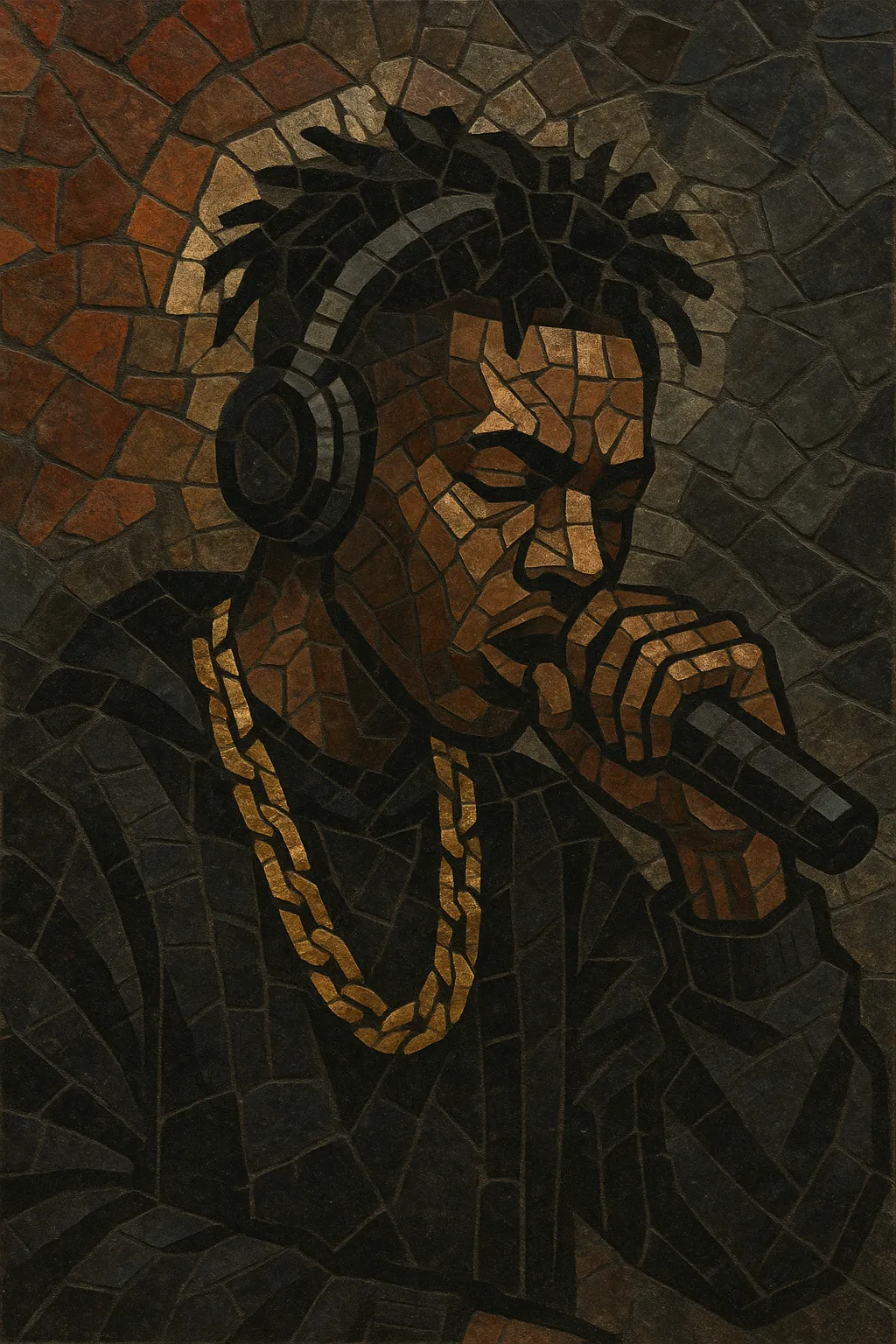Trap is a subgenre of hip hop that emerged from the Southern United States, defined by half-time grooves, ominous minor-key melodies, and the heavy use of 808 sub-bass.
The style is characterized by rapid, syncopated hi-hat rolls, crisp rimshot/clap on the backbeat, and cinematic textures that convey tension and grit. Lyrically, it centers on street economies, survival, ambition, and introspection, with ad-libs used as percussive punctuation.
Production is typically minimal but hard-hitting: layered 808s, sparse piano or bell motifs, dark pads, and occasional orchestral or choir samples. Vocals range from gravelly, staccato deliveries to melodic, Auto-Tuned flows, often using triplet cadences.
Trap crystallized in Atlanta and the broader U.S. South as producers and rappers fused Southern hip hop’s boom with the dark, skeletal moods of Memphis rap. Early architects like T.I. (who popularized the term with “Trap Muzik” in 2003), Gucci Mane, and Jeezy set the thematic and sonic template: gritty narratives over minor-key beats with dominant 808s, claps, and fast hi-hats. Producers such as Shawty Redd and Zaytoven helped define the stark, cinematic sound.
Waka Flocka Flame’s collaborations with Lex Luger introduced a maximal, orchestral strain of trap featuring bombastic brass stabs, strings, and thunderous 808s. This era codified the rhythmic language—triplet hi-hats, snare rolls, and halftime swing—while normalizing ad-lib heavy arrangements. Metro Boomin and 808 Mafia refined the palette toward darker minimalism and meticulous low-end design.
Artists like Future, Young Thug, and Migos globalized trap through melodic, Auto-Tuned vocals and infectious flows (including the triplet “Migos flow”). Trap’s production grammar became the default for much of mainstream hip hop, while its motifs permeated pop and R&B. The sound diversified from icy, nocturnal beats to lush, atmospheric variants.
Trap influenced or fused with numerous scenes worldwide: drill (Chicago, then UK/NY), Latin trap, trap soul, and aggressive crossovers like trap metal. Parallel EDM-oriented developments (“EDM trap”) imported trap drum patterns and 808s into festival drops. Today, trap functions as both a distinct hip hop subgenre and a rhythmic/production vocabulary used across pop, electronic music, and global rap.


